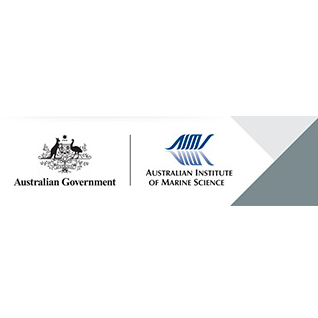Brief description
Sensor networks are a leading edge technology that can be used to provide spatially dense bio-physical measurements in real-time. In the marine environment they have particular application to the study of benthic ecosystems. The term 'sensor network' refers to an array of small, wirelessly interconnected sensors that collectively stream sense data to a central data aggregation point. Some sensors can be set to sample according to prevailing conditions (e.g. monitoring salinity more frequently after rainfall), but since communications with the sensors will be bi-directional they can also be manipulated by central land-based control systems. Initially they will be deployed in a large scale pilot to collect data related to the interaction of heat and light in coral bleaching, and to understanding the impact of upwelling from the Coral Sea upon the productivity of Great Barrier Reef ecosystems.While sensor networks are a leading edge technology, they are well suited to the proposed application because proven technologies exist for reliable sensing of physical variables (e.g. temperature, salinity, light) critical to the immediate scientific questions, which are:1. understanding the interaction of heat and light in coral bleaching, and2. understanding the impact of upwelling from the Coral Sea upon the productivity of GBR ecosystems.The immediate value of the network will be its ability to return spatially dense bio-physical measurements in real-time. As such this represents a large scale trial or proof of concept of a very important emerging technology for application in the marine environment with particular relevance to benthic ecosystems such as Great Barrier Reef and other benthic environments.The project looks to deploy sensor networks at seven sites along the Great Barrier Reef to measure a range of physical parameters at a range of scales. The project will install communications, data and platform infrastructure that will support future sensor work looking at biological and chemical parameters.
The FAIMMS Project is part of the GBROOS or Great Barrier Reef Ocean Observing System project which in turn is part of the Australian Integrated Marine Observing System or IMOS.
Lineage
Maintenance and Update Frequency: continualNotes
CreditWireless Sensor Networks Facility, part of the Great Barrier Reef Ocean Observing System project (GBROOS) (IMOS)
Australian Institute of Marine Science (AIMS)
Australia’s Integrated Marine Observing System (IMOS) is enabled by the National Collaborative Research Infrastructure Strategy (NCRIS). It is operated by a consortium of institutions as an unincorporated joint venture, with the University of Tasmania as Lead Agent.
Modified: 12 03 2024
text: westlimit=151.776; southlimit=-23.54; eastlimit=152.179; northlimit=-23.37
text: westlimit=153; southlimit=-28.0; eastlimit=154; northlimit=-27.0
text: westlimit=146.262; southlimit=-19.29; eastlimit=148.08; northlimit=-17.91
text: westlimit=145.275; southlimit=-14.784; eastlimit=145.606; northlimit=-14.455
Lessons from the field - Two years of deploying operational wireless sensor networks on the Great Barrier Reef: Bainbridge S, Eggeling D and Page G (2011) Lessons from the field - Two years of deploying operational wireless sensor networks on the Great Barrier Reef. Sensors 11: 6842-6855.
local : articleId=8864
Physical monitoring of the Great Barrier Reef to understand ecological responses to climate change: Lough JM, Bainbridge S, Berkelmans RWC and Steinberg CR (2010) Physical monitoring of the Great Barrier Reef to understand ecological responses to climate change. pp. 66-110. In: You J and Henderson-Sellers A (eds) Climate Change Monitoring and Strategy. Sydney University Press.
local : articleId=8004
FAIMMS Sites
uri :
https://data.aims.gov.au/gbroosdata/services/rss/site/1![]()
A services based architecture for acheiving interoperability of environmental observational data: Bainbridge S (2011) A services based architecture for acheiving interoperability of environmental observational data. 2011: 15-20. In: Jones MB and Gries CG (eds) Proceedings of the Environmental Information Managment Conference 2011. University of California at Santa Barbara.
local : articleId=8975
global : 506788a0-0b4e-11dd-9669-00008a07204e
- global : d63dc150-0d02-11dd-bbbb-00008a07204e


